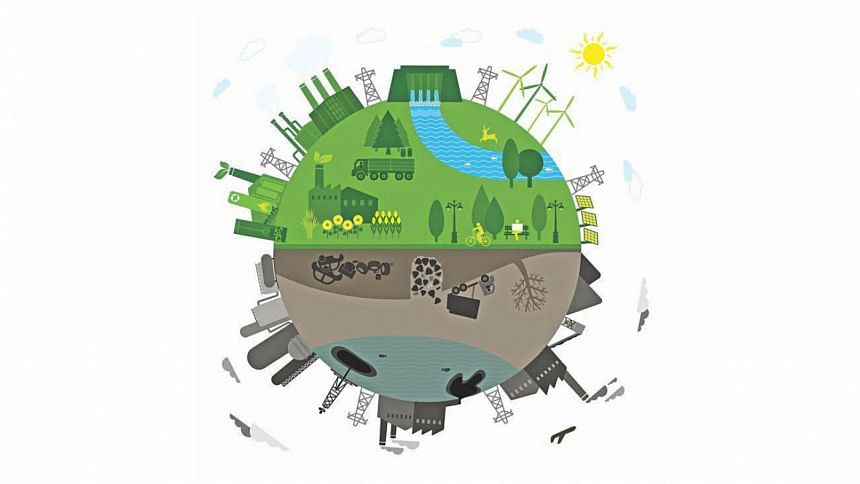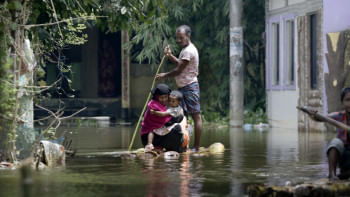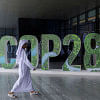The link between climate change and financial systems

The susceptibility of Bangladesh's financial system to climate change risk is heightened, given its rank as the seventh most climate-vulnerable country in the world. Thus, Bangladesh Bank recently circulated guidelines for Sustainability and Climate-Related Financial Disclosure for banks and non-bank financial institutions (NBFI) of Bangladesh. These guidelines require banks and NBFIs to assess and report their assets' exposure to climate change risks. But will the financial industry give the same degree of importance to this issue as it does to other financial risks?
Climate change affects financial institutions via two primary avenues: physical risks and transition risks. Given Bangladesh's low-lying deltaic geography, the nation faces recurrent natural calamities such as flooding, cyclones, erratic rainfall, and droughts, impacting property, livelihoods, and people. A large part of Bangladesh is particularly vulnerable to climate-induced disasters. Consequently, when banks and financial institutions have assets in these vulnerable areas, it places their assets at risk.
Similarly, if not systematically mitigated, transition risks are anticipated to impact banks and financial institutions more severely. The Paris Agreement and global climate initiatives are poised to phase out high-emitting businesses and technologies over time. Around 195 nations that endorsed the Paris Agreement have submitted their targets for reducing greenhouse gas emissions via their Nationally Determined Contributions (NDC). Thus, green and clean businesses are expected to replace fossil fuel-intensive businesses soon. The failure of financial institutions to consider the effects of these climate policies, market dynamics, and green technological shifts at the portfolio level could consequently impact the assets of the banks.
It has been found that banks situated in countries facing elevated climate risk demonstrate diminished levels of financial stability. For instance, banks engaged in business activities in regions affected by weather-related natural disasters in the United States experience a substantial decline in financial stability. This is evidenced by heightened probabilities of default, lower Z-scores, increased ratios of non-performing assets, elevated foreclosure ratios, reduced returns on assets, and lower equity ratios in the aftermath of such disasters. The adverse impact on banks' financial stability is attributed to a surge in the non-performing loan ratio following a disaster. Additionally, the destruction of collateral utilised by borrowers to secure loans may further contribute to fluctuations in the financial stability of banks.
Following a severe natural disaster, banks could confront a survival crisis marked by inadequate liquidity. The aftermath of such an event sees an escalation in the liquidity risk for banks, primarily driven by clients withdrawing existing deposits and savings. Additionally, affected individuals may seek emergency loans, further amplifying the liquidity challenge for banks.
Though there is an upward trend in green and sustainable finance disbursement in Bangladesh, there is a lack of enthusiasm when it comes to identifying and disclosing assets exposed to climate risk due to certain challenges. Assessing a bank's exposure to the transition risk of climate change is complex, requiring an understanding of borrowers' responses to climate-related policies. The identification and assessment of a bank's exposure to the physical risks of climate change require a clear understanding of location-specific climate vulnerability. For instance, vulnerability to climate change may differ between unions within a district, with one union facing heightened vulnerability while another remains less exposed. When banks begin to consider lending to these disaster-prone and climate-vulnerable areas, the amount of their assets exposed to climate risk may increase. Consequently, borrowers in such areas may encounter challenges in securing loans, despite being the ones most in need of financial support. To address this dilemma, banks must develop financial products that cater to the specific needs of climate-vulnerable areas.
In general, the calculation and identification of bank assets exposed to climate change risks present a few technical challenges. It is imperative to establish explicit criteria for evaluating banks' exposure to both physical and transition risks. Sector-specific emission factor data is crucial for identifying climate risk exposure, and collaboration between the government and relevant parties is essential for acquiring such information. Banks and financial institutions lack immediate access to future climate scenarios and trends for Bangladesh, which are essential for calculating climate risk exposure to bank assets. The government, with the help of an international climate research group, can develop region-specific climate scenarios for both the short term and long term to address this.
Another significant challenge in identifying a bank's assets under climate risk exposure is the shortage of personnel with expertise in ESG (environmental, social, and governance), climate scenarios, emission benchmarking, and banking. Capacity building among banking professionals is vital for successfully identifying at-risk financial assets. Furthermore, it is crucial to create awareness among banks' top management about the necessity of disclosing assets exposed to climate change risk.
Karimul Tuhin is an environmental economist and green finance professional. Reach him at [email protected]
Views expressed in this article are the author's own.
Follow The Daily Star Opinion on Facebook for the latest opinions, commentaries and analyses by experts and professionals. To contribute your article or letter to The Daily Star Opinion, see our guidelines for submission.

 For all latest news, follow The Daily Star's Google News channel.
For all latest news, follow The Daily Star's Google News channel. 











Comments